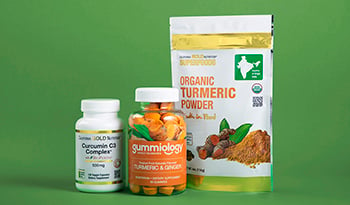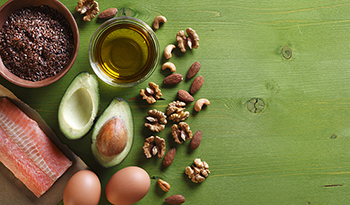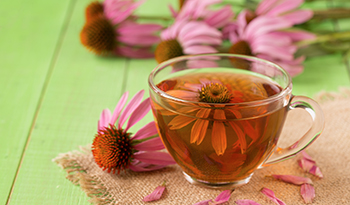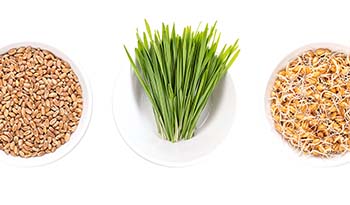Korzyści zdrowotne błonnika pokarmowego

Według Światowej Organizacji Zdrowia, typowy dorosły powinien spożywać około 25 gramów błonnika dziennie. Jednak większość ludzi nie spożywa wystarczającej ilości.
Błonnik jest rodzajem węglowodanów. Większość spożywanych węglowodanów jest rozkładana w przewodzie pokarmowym, a następnie wchłaniana z jelit do krwiobiegu. Błonnik jest jednak składnikiem roślin, który nie jest trawiony ani wchłaniany przez ludzki układ pokarmowy. Po prostu przechodzi przez nasze jelita i wydostaje się z naszego stolca.
Dlaczego jest to korzystne, jeśli po prostu przechodzi, możesz się zastanawiać? Ponieważ dodaje objętości, tworzy bardziej miękką konsystencję stolca i wspomaga tranzyt stolca w naszych jelitach. Zapobieganie zaparciom jest jednym z głównych powodów, dla których ludzie szukają diety bogatej w błonnik i nie bez powodu. Zaparcia mogą być nieprzyjemne, powodując ból brzucha, wzdęcia, ból podczas defekacji i wysiłek. Jest to również główna przyczyna hemoroidów i szczelin odbytu, które z pewnością nie są przyjemne. Błonnik pokarmowy jest niezbędnym składnikiem w zapobieganiu tym wszystkim zjawiskom.
Oprócz utrzymania zdrowia jelit, badania wykazują jednak wiele innych potencjalnych korzyści płynących z błonnika pokarmowego:
Zapalenie uchyłków
{Uchyłki są niewielkimi kieszeniami w okrężnicy i są dość powszechne. Określamy to jako "zapalenie uchyłków" (ang. diverticulosis.” Jeśli jednak małe ilości cząstek jedzenia utkną w tych kieszeniach, bakterie mogą zainfekować i rozpalić te regiony – określamy to jako "zapalenie uchyłków".Należy pamiętać, że w medycynie wszystko, co kończy się na “-itis” odzwierciedla stan zapalny. A zapalenie uchyłków jest dość bolesne, o czym mogą zaświadczyć ci, którzy go doświadczyli. Dodanie objętości poprzez błonnik pomaga w przechodzeniu stolca i cząstek pokarmu, tworząc płynniejszą podróż w okrężnicy, a tym samym chroniąc przed zapaleniem uchyłków.
Zarządzanie wagą
Błonnik dodaje objętości i wywołuje uczucie długotrwałej sytości. Chroni przed przejadaniem się, a osoby spożywające dietę bogatą w błonnik mają zmniejszone ryzyko rozwoju otyłości w ciągu życia, a nawet mogą doświadczyć utraty wagi.
Choroby serca
Liczne badania (5,6) sugerują, że dieta o wyższej zawartości błonnika wiąże się ze zmniejszonym ryzykiem chorób układu krążenia, w tym chorób serca i udaru mózgu. W rzeczywistości, na każde 10 g błonnika pokarmowego, ryzyko wystąpienia incydentów wieńcowych zmniejszyło się o 14%, a zgonu wieńcowego o 27% zarówno u mężczyzn, jak i kobiet w jednym z badań.
Cukrzyca
Wysokobłonnikowa, pełnoziarnista dieta (szczególnie z otrębami i błonnikiem zbożowym) również zmniejsza ryzyko rozwoju cukrzycy i kontroluje poziom glukozy we krwi u diabetyków. Może to być przynajmniej częściowo spowodowane niższym indeksem glikemicznym w żywności o wysokiej zawartości błonnika.
Cholesterol
Różne badania sugerują również, że błonnik rozpuszczalny może pomóc w obniżeniu poziomu cholesterolu całkowitego i cholesterolu LDL, chociaż redukcja jest prawdopodobnie niewielka. Pełnoziarnisty owiesW szczególności może być najbardziej skuteczny.
Rak jelita grubego
Niektóre grupy ekspertów donoszą, że spożywanie diety o wyższej zawartości błonnika może chronić przed ryzykiem zachorowania na raka jelita grubego. Dane są jednak nadal sprzeczne, dopóki nie zostaną przeprowadzone dalsze badania.
Zespół jelita drażliwego (IBS)
IBS to nieuleczalny, frustrujący stan, w którym pacjenci doświadczają zaparć i/lub biegunki, a także dyskomfortu w jamie brzusznej wywołanego przez określone pokarmy lub czynniki stresogenne. Rola błonnika w IBS jest jednak obecnie niejednoznaczna, a dane pokazują mieszane wyniki. Błonnik może potencjalnie pogorszyć objawy IBS u niektórych osób, a duże badanie obaliło skuteczność błonnika u pacjentów z IBS. Inne badania wykazały korzyści ze stosowania psyllium w szczególności w leczeniu IBS. Ogólnie rzecz biorąc, nie ma długoterminowych szkód w próbach błonnika dla osób z IBS– pamiętaj tylko, aby rozpocząć i stopniowo zwiększać ilość błonnika w diecie.
Źródła błonnika w żywności
Istnieją dwa rodzaje błonnika pokarmowego , oba z potencjalnymi korzyściami zdrowotnymi. Błonnik rozpuszczalny (psyllium, owies, pektyna, orzechy, fasola) rozpuszcza się w wodzie i jest rodzajem, który jest najbardziej powiązany ze zmniejszonym ryzykiem chorób serca i cukrzycy. Nierozpuszczalny błonnik (otręby pszenne, rośliny strączkowe, brązowy ryż) nie rozpuszcza się w wodzie i jest najlepszy dla utrzymania zdrowia jelit. Zaleca się mieszanie obu rodzajów w diecie.
Wskazówki dotyczące spożywania większej ilości błonnika
- Wybieraj produkty pełnoziarniste (100% chleb pełnoziarnisty, brązowy ryż , makaron pełnoziarnisty ). , makaron pełnoziarnisty itp. ) zamiast rafinowanych ziaren (biały chleb, biały ryż itp.) .
- Postaw na porcję (lub dwie) warzyw do każdego posiłku.
- Zamiast przetworzonych, rafinowanych słodyczy wybierz na deser owoce.
- Zamiast soku, wybierz prawdziwy owoc.
- Rano wybieraj płatki zbożowe o wysokiej zawartości błonnika, a nie cukru.
- W przypadku zaparć spożywaj suszone śliwki. które są źródłem błonnika o działaniu zmiękczającym stolec.
- Wymieszaj kilka łyżek czystych otrębów pszennych z jedzeniem.
- Najlepiej jest pozyskiwać błonnik poprzez dietę. Jeśli jednak nie masz takiej możliwości i zdecydujesz się na suplementację, pamiętaj o stopniowym zwiększaniu dawki błonnika w miarę upływu czasu, aby zmniejszyć ryzyko wzdęć, skurczów i wzdęć.
- Jeśli zwiększysz ilość błonnika, upewnij się, że pijesz wystarczającą ilość płynów, aby dopasować się do tego wzrostu.
Bibliografia:
- https://health.gov/dietaryguidelines/2015/guidelines/appendix-7
- https://www.ncbi.nlm.nih.gov/pubmed/9521633
- https://academic.oup.com/jn/article/130/2/272S/4686350
- https://www.ncbi.nlm.nih.gov/pubmed?term=21696306
- https://www.ncbi.nlm.nih.gov/pubmed?term=24355537
- https://www.ncbi.nlm.nih.gov/pubmed?term=25727082
- https://www.ncbi.nlm.nih.gov/pubmed?term=14980987
- https://www.ncbi.nlm.nih.gov/pubmed?term=17760498
- https://www.ncbi.nlm.nih.gov/pubmed?term=12197996
- https://www.ncbi.nlm.nih.gov/pubmed?term=9925120
- https://www.ncbi.nlm.nih.gov/pubmed?term=26269373
- https://www.wcrf.org/dietandcancer/exposures/wholegrains-veg-fruit
- https://www.ncbi.nlm.nih.gov/pubmed/9895396
- https://www.ncbi.nlm.nih.gov/pubmed/9521633
- https://www.ncbi.nlm.nih.gov/pubmed?term=21833945
- https://www.ncbi.nlm.nih.gov/pubmed/19713235
WYŁĄCZENIE ODPOWIEDZIALNOŚCI:Celem niniejszej Strefy Zdrowia nie jest stawianie diagnoz...




























































































